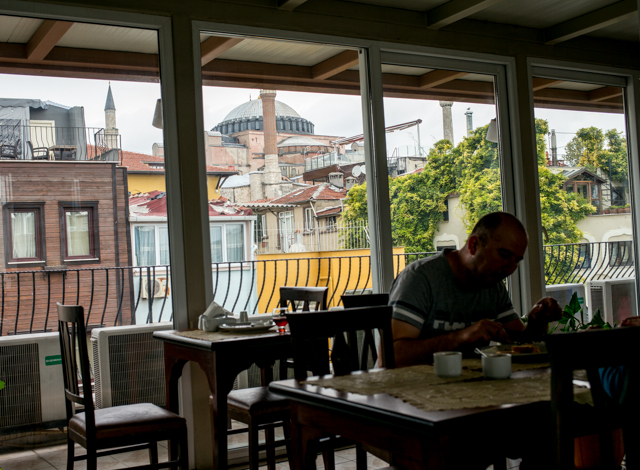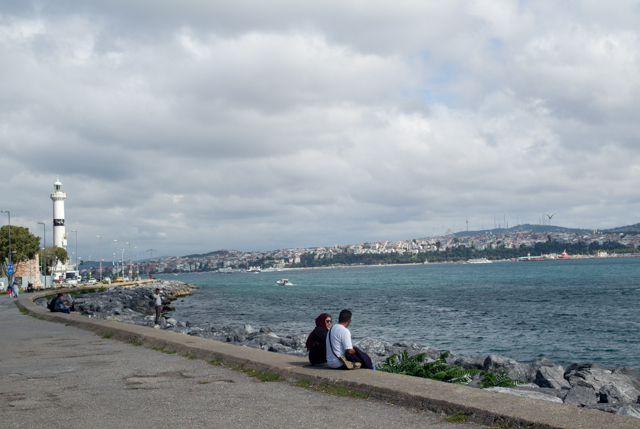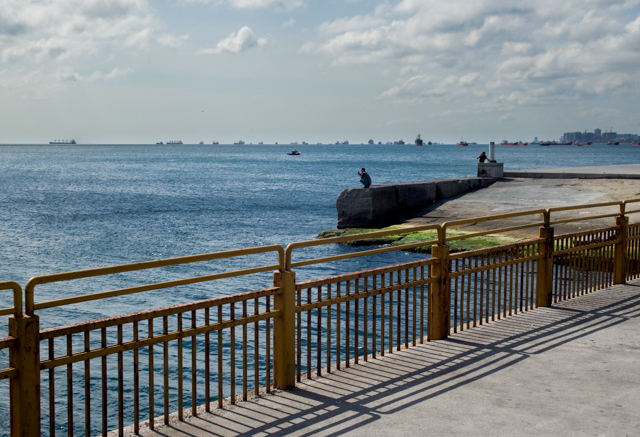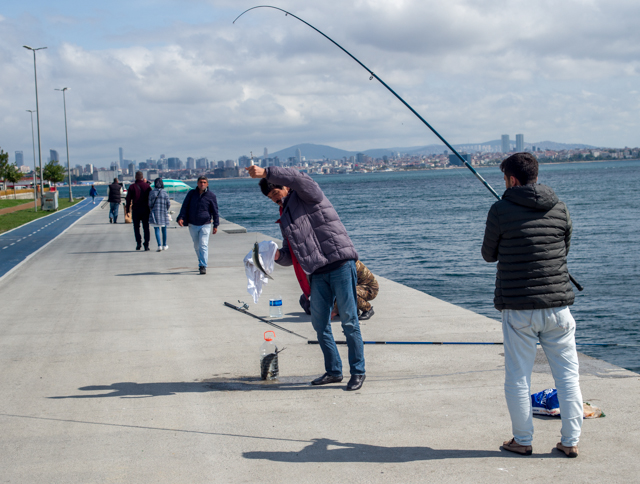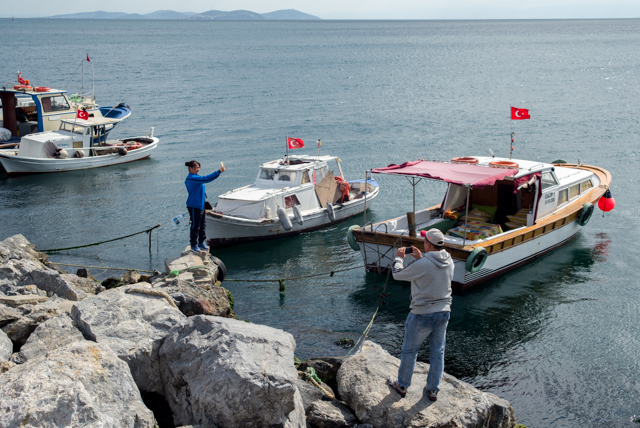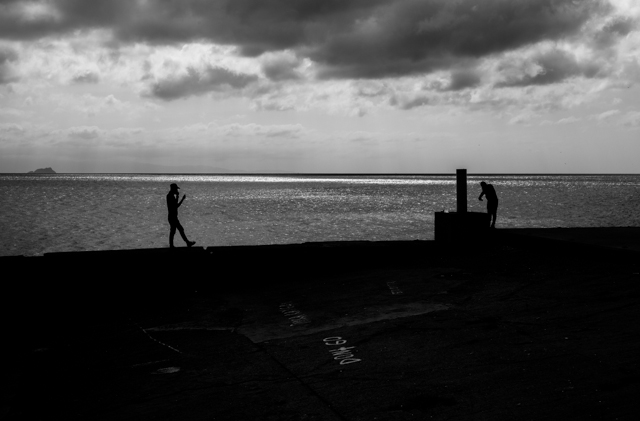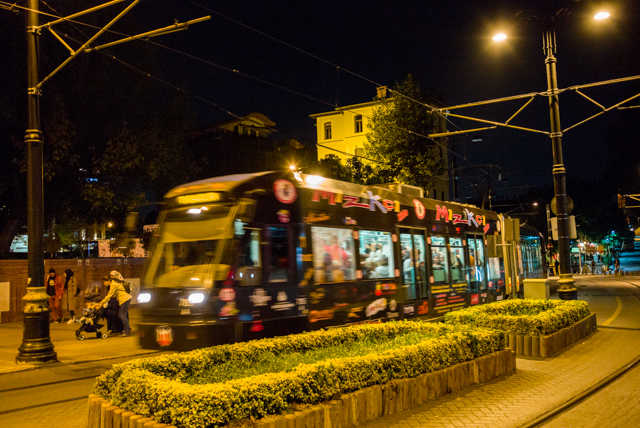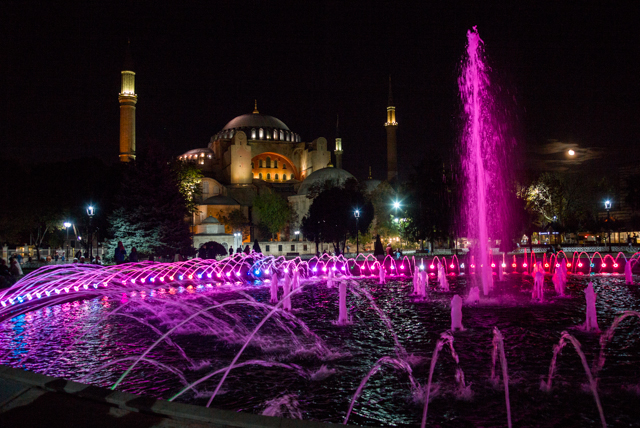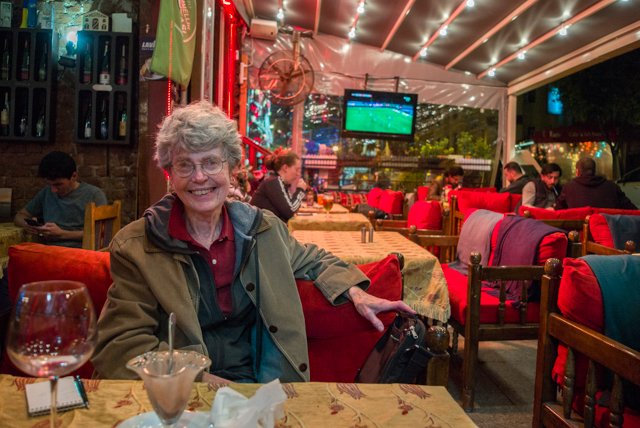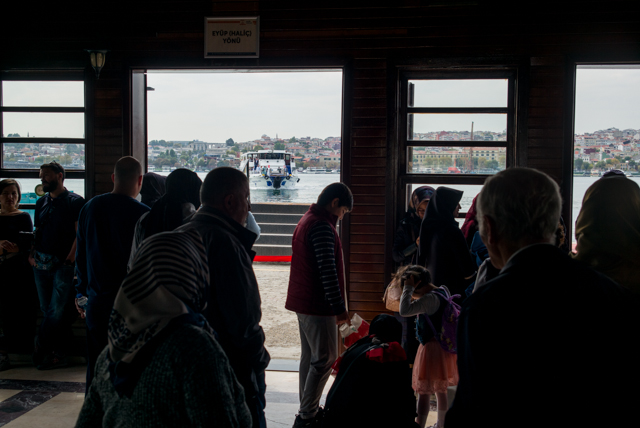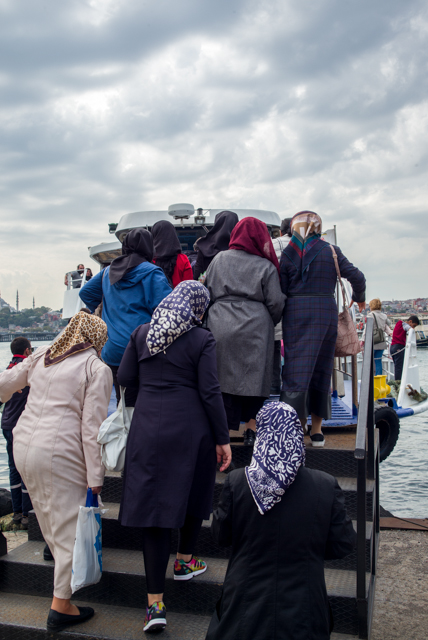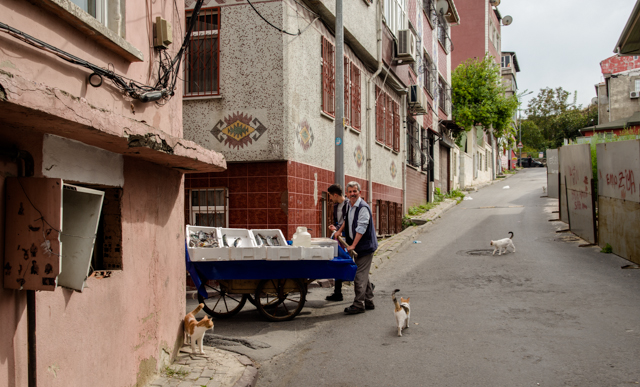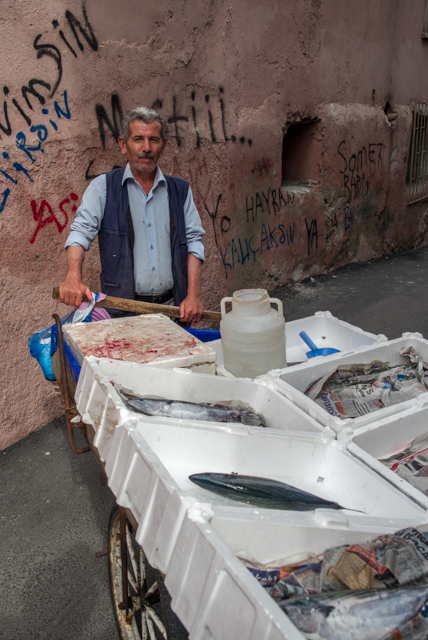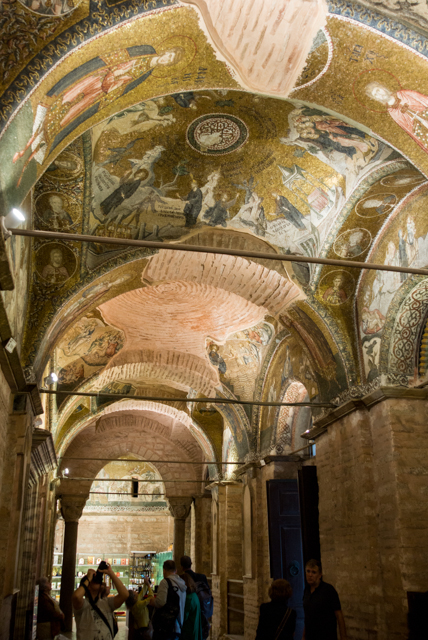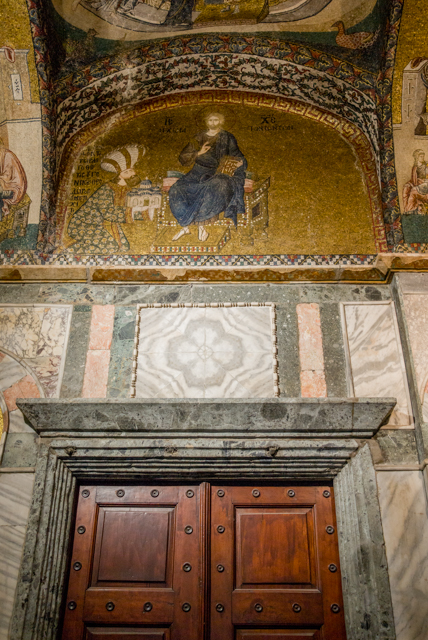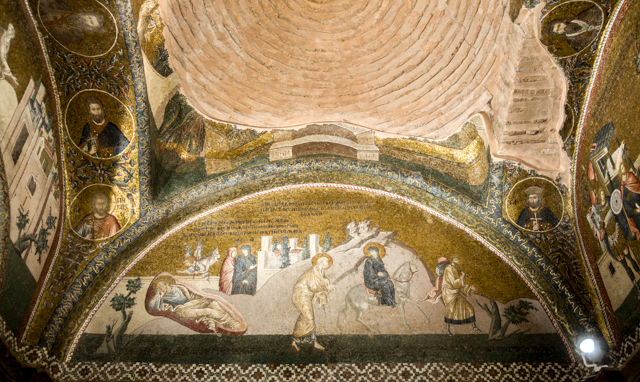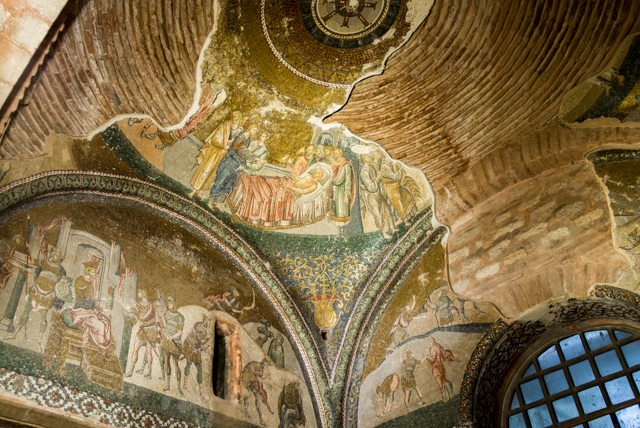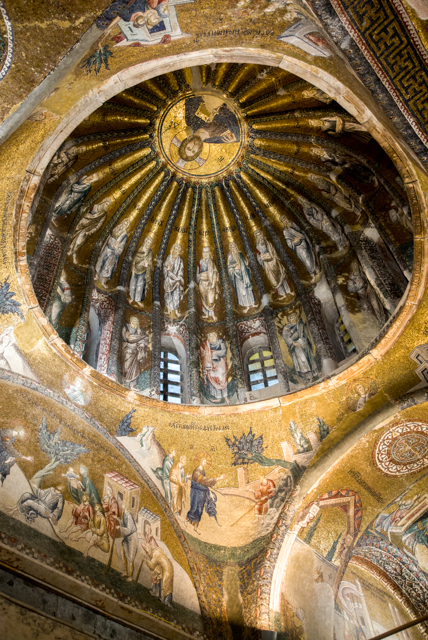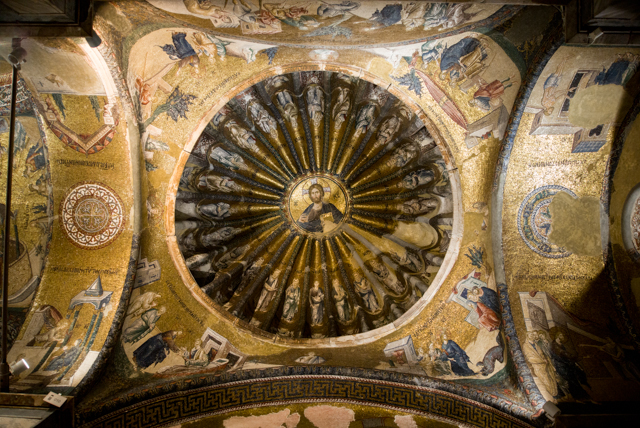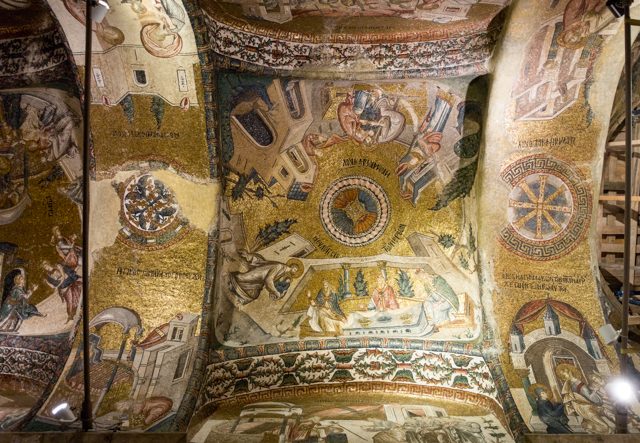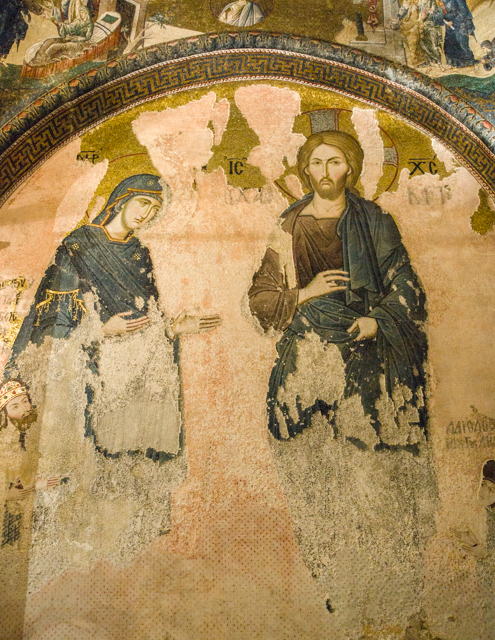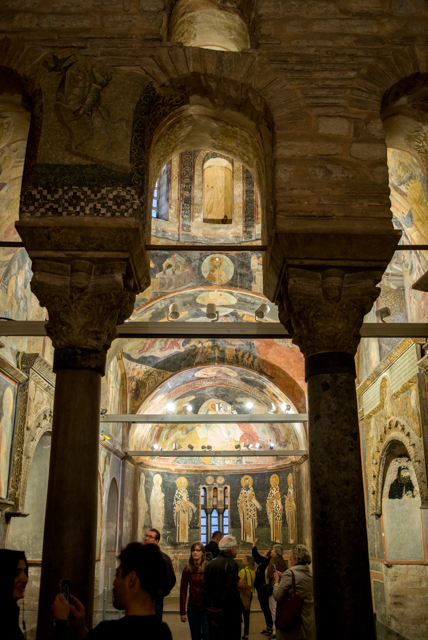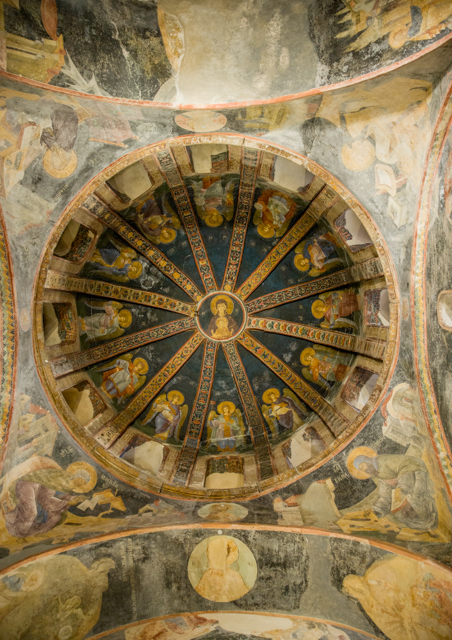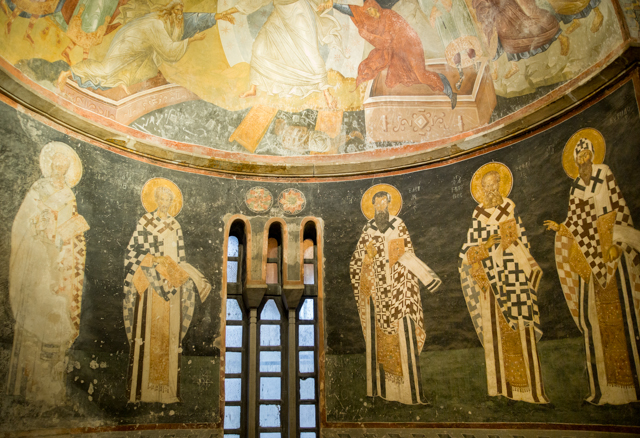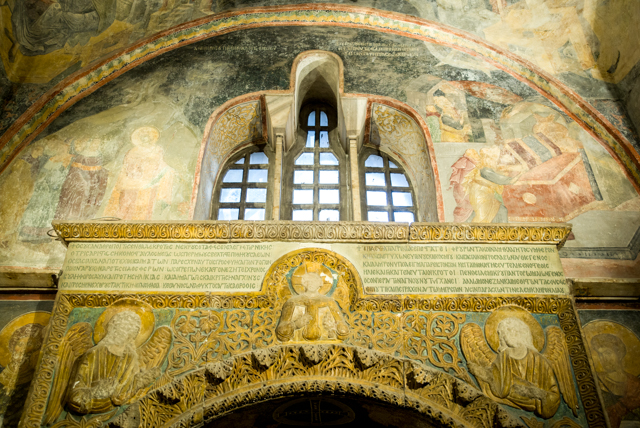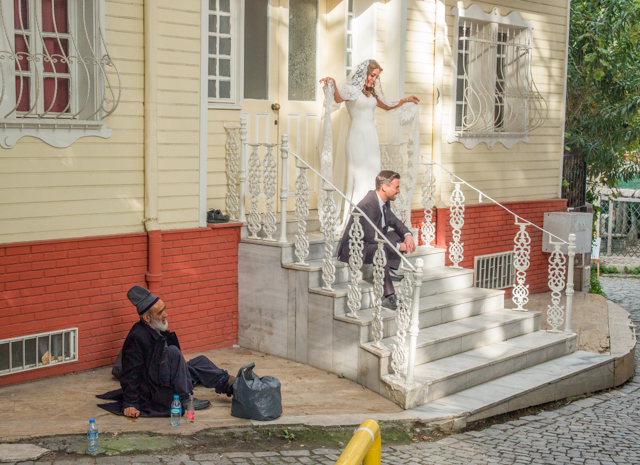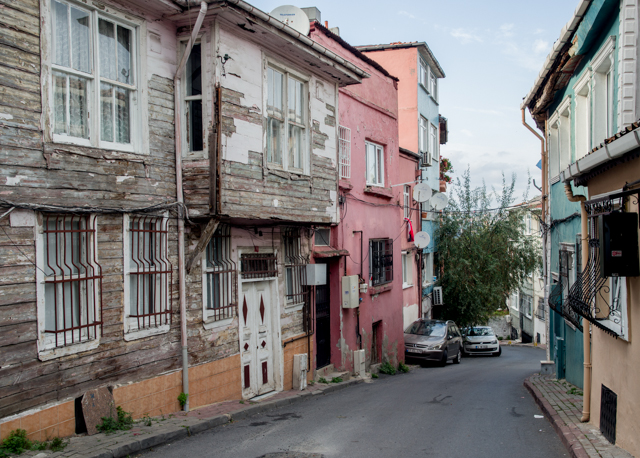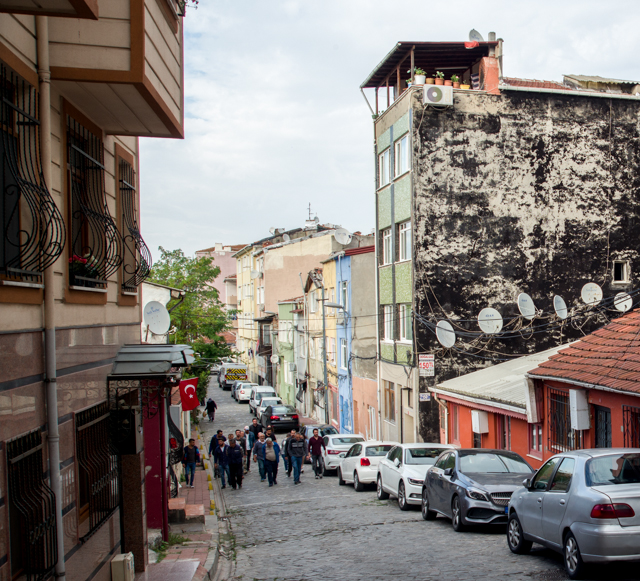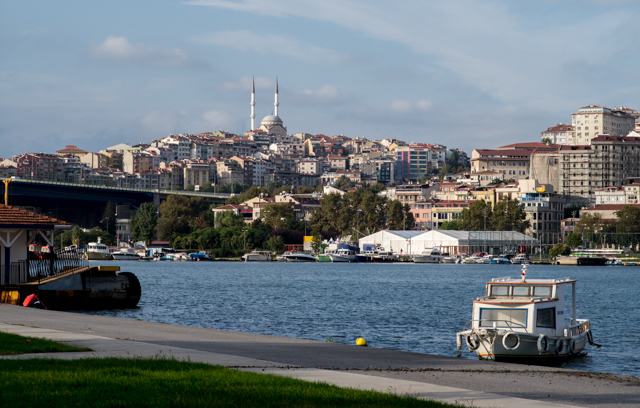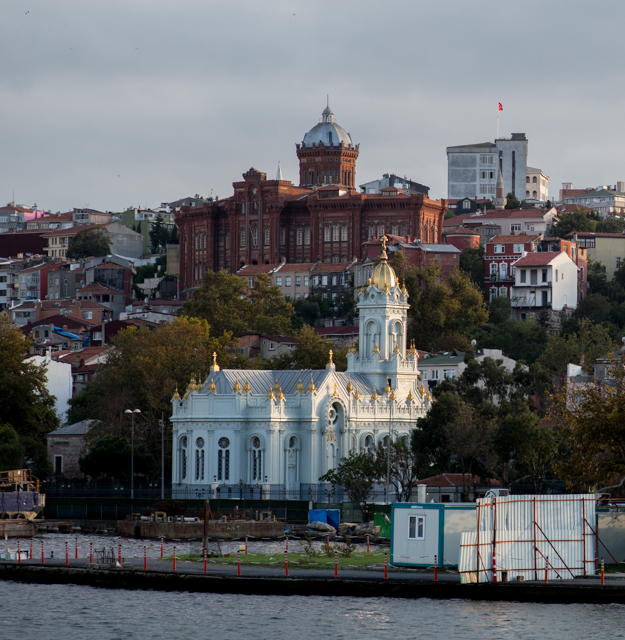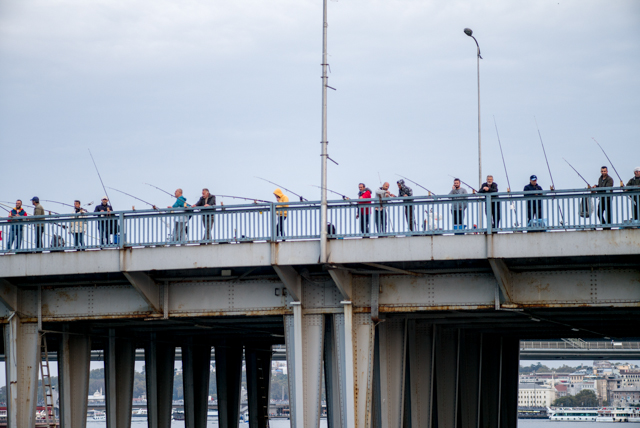Ataturk Airport in Istanbul has a much better layout than Frankfurt's, but the planes from European cities seemingly all land every day within a single hour, and that makes for an incredible crush of passengers moving very slowly through passport control. We eventually made it through, topped up our Istanbul Kart for public transportation, and boarded the Metro train just as darkness fell. It was the rush hour, and the crowded train took us to a station where we transferred to a crowded tram.
After a short time on the tram, I noticed that Regina now occupied the seat formerly occupied by a short, well-dressed, older Turkish man who was now standing. When he didn't get off the tram at the next stop, I realized that he had given his seat to "the older foreign lady." I managed to catch his eye and nodded to him. He nodded in return, and his expression told me that he was very pleased by my recognition and appreciation of his kindness. We left the tram at the Sultanahmet stop and walked out into a light drizzle.
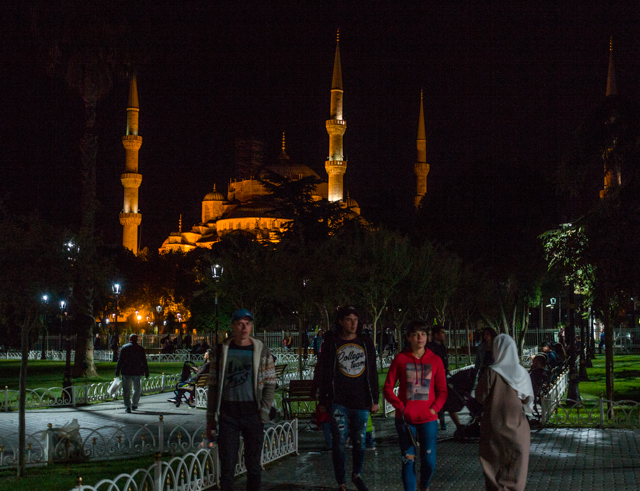
We paused to don our raingear and then walked past some sort of festive play with a big crowd and then down into the park in front of the Blue Mosque.
(Clicking on a photo will show a large one.)
We reached the Gul Sultan Hotel after requesting directions a couple of times in the crowded streets of tourist hotels, restaurants and souvenir shops that fill the Sutanahmet district. Being dead tired, we ate our dinner at the Siva Cafe across from the hotel and then slept soundly, except for a short while when loud music came from the street below.
Like the other hotels in the district, the Gul Sultan serves breakfast on the rooftop where the view can be interesting. The breakfast was excellent, and we could see the top of Hagia Sofia rising above other intervening buildings.
After breakfast, we walked down the hill to the water and along the sea wall that runs south at the north-west corner of the Sea of Marmara near where it meets the Bosphorus.
Regina became overcome by hunger, so we bought a small packet of nuts from a lone vendor. Then we walked back to the Siva Cafe and ate a pizza for a proper late lunch. Still very jet-lagged, we did little for the balance of the daylight hours (except a long nap).
Taking a stroll before a late dinner, we walked after dark uphill to the park which surrounds and spans the distance between the Blue Mosque and the Hagia Sofia.
The moon had just risen (far right) when we passed the Hagia Sofia. The 1500 year-old cathedral, built by Justinian, has survived the many earthquakes that toppled many other old buildings in Istanbul. It has also survived being turned into a mosque after the Ottoman Turks captured Istanbul in 1453.
We returned again to Siva Cafe for dinner. By eating there so regularly, we learned that it is a good way to get to know some local people. The owner and the rest of the staff knew us by now, and we were able to have some interesting conversations with them. They all are from far eastern Turkey, probably Kurds, and they gladly told us about their former homes, their families still there and their experiences in Istanbul.
We have wanted, on our previous trips to Istanbul, to visit the Chora Church (Kyrie Musei) to see the highly rated mosaics there. But we were always unable to follow our guidebook's directions to find the ferry going up the Golden Horn toward it. This time we persisted and soon learned that ferry no longer has a stop on the Eminonou side where the directions say it is, but we were directed to board a small, rickety ferry to take us to a stop on the opposite side.
Once on the other side, we waited an hour for the ferry. When it finally die, we followed a crowd of traditionally-clothed Turkish ladies onto the ferry, then it set off up the Golden Horn.
Following the guidebook's directions, we disembarked at the Avansaray stop and ate lunch at a large, empty restaurant in the park near the stop. Then we began a long, uphill walk through narrow, mostly unmarked residential streets toward the church.
Turkey is still largely a "personal scale" country in contrast to the "corporate scale" of the US. This fish monger was plying his "personal scale" business, hawking fresh fish through the narrow residential streets.
We made one wrong turn near the end of the walk to the church which took a while to perceive and to correct, but we eventually succeeded to find the church. We were richly rewarded for our effort. The mosaics are more numerous and better than any others that we have seen in Istanbul. They virtually cover all the surfaces above the doors and in the domes through much of the building.
The walls and ceilings of one section of the church are covered with frescoes which are also interesting.
We left the church and walked partway around the outside where we found a wedding party with the bride and groom posing for photos.
We retraced our steps down the hill through the residential neighborhoods. The buildings come in all shapes sizes and conditions, but nearly all occupied ones sport satellite TV antennas.
Reaching the Avansaray ferry stop, we gazed across the Golden Horn at the city, as we waited another hour in the park then boarded for the return trip. But rather than leaving the ferry where we originally got on, we chose to ride to then end of the route at Karakoy. Near one of the stops, the late-afternoon sun cast a revealing light onto the architecturally ornate Bulgarian Orthodox Church.
The ferry route passes under several bridges which cross the Golden Horn. All those bridges seem always to be lined with fishermen.
Arriving at Karakoy, we walked out of the ferry terminal into the large crowds along the shore and then to the main avenue where we boarded the trolley which took us back to the Sultanahmet stop and then we walked to our hotel. In the evening, we had one last meal at the Shiva Cafe and one last interesting conversation with its owner before retiring for our last night in Istanbul.
We left for the airport near 10:00 after breakfasting and then repacking. Riding the trolley and then the Metro train in the reverse order of our arrival, we arrived at the airport in plenty of time, which turned out to be prudent. The departure hall is nowhere near as well-organized as the arrivals at Ataturk. It's amazing to us how much stuff many people insist on taking with them on an airplane. There was one group from Senegal who had multiple carts piled high with poorly packaged items, and many other people wheeled carts with multiple large suitcases and boxes. It would seem as though they were not just going on or returning from some short trip, but that they are moving to the new country at the far end of their flight.
We received boarding passes after waiting some time in a long line, and then headed toward our assigned gate. It turned out to be a very long walk. Not so far or difficult as at Frankfurt, but a long walk through the crowds of idle people just standing around and blocking traffic. Eventually the crowds thinned and we made good progress, arriving at the gate just as the buses pulled up to take passengers to the plane.
